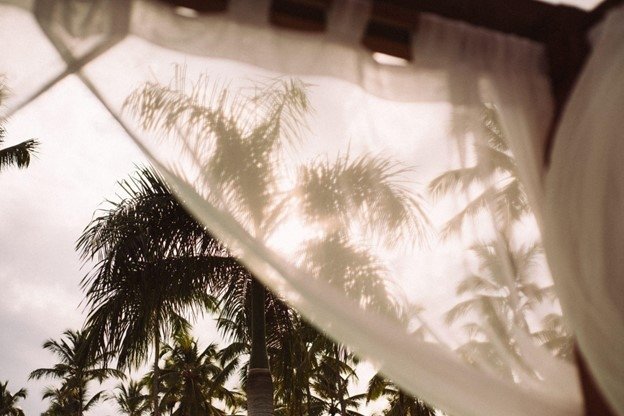Table of Contents Show
Whatever your needs may be for shading an area, they can be met.

The most challenging aspect of this procedure is going to be determining which sail profile and cut would work best for you, given the wide variety of sails that are intended to meet any and all requirements. What is your process, then?
The Quick Response is… There is no Scientific Evidence
Obviously, the decision you choose will be based solely on your own personal preferences in the end. You must examine the sail’s appearance, the shape you choose, the amount of shade or protection you need, the number of sails you’ll need, and the color you select.
Then there’s the meat of the matter, which includes considerations like whether or not installation poles (https://www.cslb.ca.gov/About_Us/Library/Licensing_C) are necessary, where the sail will be attached, and how the covered area will be used.
In all of these areas, we have some basic advice that you may use to assist you to make the best choice possible based on the information that you have.
Style
A square sail will provide more shade than a triangular sail, but the latter offers more spatial flexibility and is better able to fit into spaces with limited space.
In addition to this, there is one less place at which it may be fixed, which gives you somewhat more leeway in terms of your creative potential.
Read Also:
Consider Stacking Two Triangular Shade Sails for a Dramatic Design that’s Also Useful
Make sure your decision matches your space. For instance, if you already have a source of shade, such as a veranda, you may want to think about adding shade cloth to it so that it provides more coverage.
Substance
When dragged to their full extent, the edges of all sails will exhibit a curvature. A 4m-by-4m shade is measured corner to corner, thus it’s not 4m square.
Consider where the sun is going to rise and where it is going to set, as well as the angle at which it will reach your sail. Be cautious of precipitation, particularly if you’re planning an all-weather sail: construct a slope so rainwater doesn’t pool in the center.
In conclusion, if you want to maintain your sail taut and give extra tensioning capabilities, you should think about utilizing turnbuckles. Your sails may get less taut and stiff with time, but if you start using them right away, you may prevent this from happening.
What You Should Search for in a Triangle Sunshade Sail
Protective cover for large areas may be provided by sails that are intended to obscure the light. If you want to create shade on a patio that is not very large, you should choose a shade that is in the shape of a smaller triangle.
A shade structure that is either triangular or rectangular in shape and has sides that are at least 4–6 meters in length will function the best when it comes to shading large areas.
Sunshade sails offering protection from 95%-98% of UV rays are ideal. If a piece of fabric can block 98% of the sun’s rays, we say that it has a sun protection factor (SPF) of 50.
The vast majority of sun sails are not entirely waterproof; rather, they place an emphasis on breathability by allowing some light and air to pass through. Fabric made of polyethylene with a density of 185 gsm is long-lasting. Click here for more information on polyethylene.
If you want something that will not only shield you from the sun but also protect you from the rain, look for a shade that is constructed out of a material that is more solid, such as Oxford polyester.
It will be much simpler to install the shade if you ensure that each of its four corners is equipped with a D-ring made of stainless steel and that these rings are attached to each other. These often have a longer lifespan than shades that just use fabric loops as their attaching mechanism.
There is a sun sail available in about every color you can think of. A contemporary look may be accomplished by the use of neutral tones like white, as well as through the incorporation of vibrant bursts of color when appropriate. Select shades in more natural tones if you want your outdoor space, including the wooden furniture, to seem more cohesive.
What Exactly is a Shade Sail, Though?
When you make use of a sun shade sail triangle, you can provide your outdoor space with a covered area that is versatile and semi-permanent at the same time. This might be a really beneficial addition.
Fabric is utilized in their construction, and they may be found in an extremely diverse range of shapes and dimensions, making them suitable for usage in a broad variety of environments.
Installing sail shades, which are capable of being fastened to a wide variety of surfaces including buildings, trees, and structures, will allow you to get shade in practically any location you want it.
They are also fantastic for shielding the skin from the sun, creating a cozy and shady outdoor setting that the whole family can take pleasure in while spending time together outside. At least ninety percent of the sun’s UV radiation is thwarted by them.
It could be difficult to pick the components that would look best in your outdoor space since there is such a wide variety of shapes, colors, and sizes to choose from.
Determine the Area That Needs Shading Before Continuing
You probably already have a plan for where in the garden you want to put your sail shade, but unlike some other shades like these ones here https://www.merriam-webster.com/dictionary/sunshade) solutions and structures, sail shades may be relocated with relative ease.
Find the Structure You Wish to Connect it to And Take Note of Its Location
An excellent place to start is by installing the shade sail’s attachments on pre-existing buildings like your home or garage. If that won’t work, then you’ll have to think about purchasing some poles to support your shade if you want it anywhere near the right height.
Most significantly, you’ll want to position the shade sail such that one corner is lower than the others, allowing water to drain away. The sail shade’s waterproof cloth might be stretched or torn if it isn’t tight enough or put at an improper angle to prevent rain from collecting on it like a bag.
They propose that each shade sail have an angle of slope of at least 30 degrees, provided that the shade is suitably taught.











